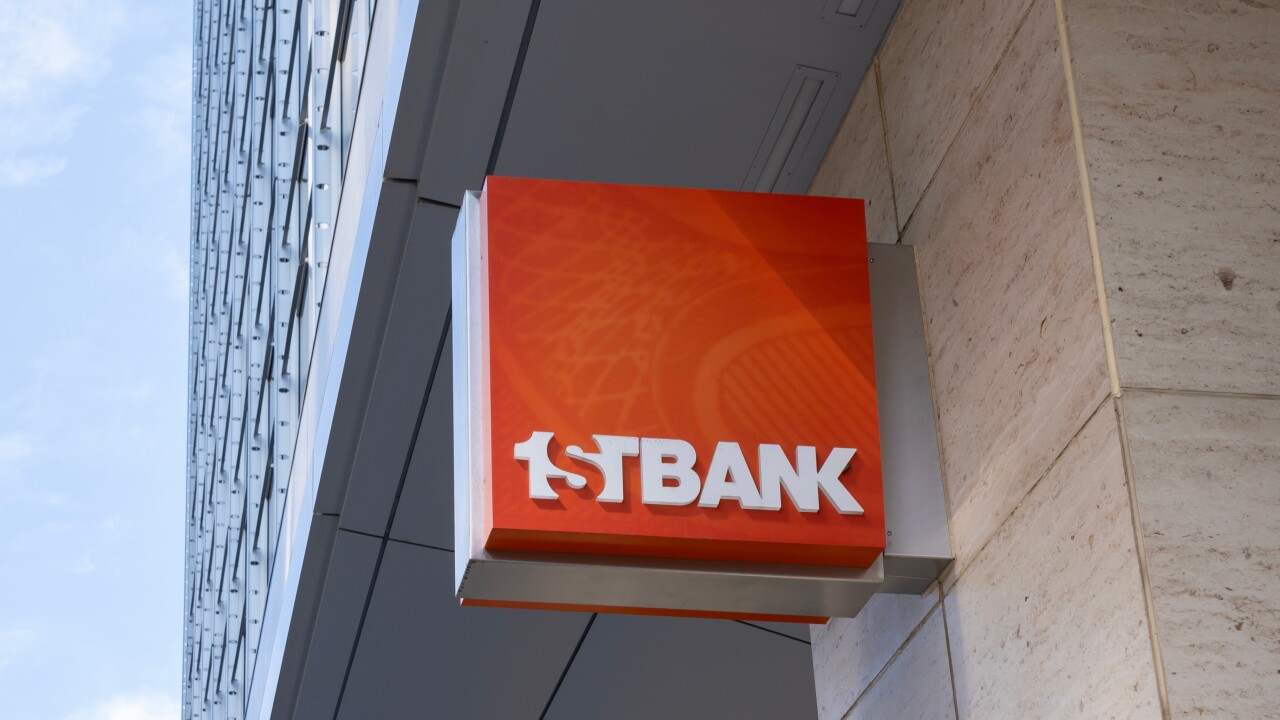Viewpointe Archive Services LLC, the massive check image repository that serves 11 of the nation's biggest banks, plans to link its systems with the archive operated by Fiserv Inc., which serves thousands of smaller banks.
The agreement, which is expected to be announced today, is the second in as many weeks for Viewpointe, which has emerged as a leader in the transition to electronic check clearing. Users of either system would be able to settle payments electronically by sending and receiving check images to users of the other.
Executives for the two vendors said that connecting Viewpointe's Pointe2Pointe image gateway to the Fiserv Clearing Network would enable Viewpointe's big-bank customers, which serve corporate clients that receive consumer payments, to send check images to Fiserv's small-bank customers, which serve the consumers who are writing the checks. They expect the hookup to be done by early 2006, but they would not say when banks might actually begin transmitting image files between the two archives.
"We're doing it as fast as we can," said Lou Buglioli, Viewpointe's chief executive officer. "The timing is going to depend on everything that is going on."
Fiserv, of Brookfield, Wis., handles check processing for 1,600 banks and has 2,400 other customers that use its products in-house for check processing. All of these companies are eligible to join the Fiserv Clearing Network, which provides clearing and settlement services among Fiserv's customers.
Stephen J. Ward, the division president of market development and product delivery in Fiserv's item processing group, said that only about 110 banks have signed up for the network, but that he expects to have as many as 300 by yearend.
The Fiserv-Viewpointe agreement would simplify the legal contracts that are required for image exchange. Under the agreement, Fiserv's customers would authorize the vendor to act as their agent for sending and receiving check images, making it unnecessary for Viewpointe's banks to negotiate individual contracts with the multitude of Fiserv clients.
"You can send a paper cash letter to anybody and they have to accept it. You can't send an image file without their agreement," Mr. Ward said. "It's pretty easy to send files down a pipe. The real challenge in all of this is how you deal with the legalities of presentment and exceptions, and how do you get proper credit back to the customers."
Viewpointe, which is based in Charlotte, has taken a leading role this year in accelerating the adoption of image exchange. In May it introduced Pointe2Pointe, which allows banks that do not store images within its archive to transmit image files to its members through the Viewpointe system for settlement. At the same time it cut its rates in an effort, executives said then, to spur more use.
By late October four regional banks had signed up for Pointe2Pointe, and Compass Bancshares Inc. of Birmingham, Ala., was using the connection to route images to Bank of America Corp.
And last week Viewpointe announced that it had established a connection with Metavante Corp.'s Endpoint Exchange Network, and that B of A had started transmitting image files to Endpoint customers the previous week. (Metavante is the technology unit of the Milwaukee banking company Marshall & Ilsley Corp.)
B of A and Viewpointe's other owner banks - JPMorgan Chase & Co., U.S. Bancorp, SunTrust Banks Inc., and Wells Fargo & Co. - said in September that they all planned to be clearing their common checks through the shared check-image archive by spring 2007.
Mr. Buglioli said that if the owners meet that 18-month goal, it would have them clearing 2.4 billion items a year through the archive. Viewpointe is also trying to get its six non-owner customers - BB&T Corp., First Horizon National Corp., the Harris Bank unit of Bank of Montreal, HSBC Bank USA, National City Corp., and Zions Bancorp. - to begin clearing through the archive, which could raise its volume to 4 billion items a year.
Viewpointe says its 11 customers generate more than half of U.S. check volume.
Mr. Buglioli said that hooking up so many companies, some within Viewpointe's systems and some external companies that are linking to the archive, is complex. "It's a little like slot times on the airlines."
Aaron McPherson, the research manager of payments at Financial Insights Inc. in Framingham, Mass., a unit of the technology publisher International Data Group Inc., said that the Fiserv-Viewpointe agreement is another step forward for image exchange but that images probably will not supplant paper check clearing to any major extent until 2007.
Not all of the image-exchange systems are working together, Mr. McPherson said. "These connections are prerequisites," he said. "You've still got some fragmentation in the exchange networks. Until you solve that, you're not going to have fast growth."
Mr. Buglioli said he hoped Fiserv would become an "image-share" user of Viewpointe. Unlike image-exchange networks, which transmit images from one user to another, Viewpointe's members store their images in a single archive and settle checks by granting each other permission to view the files. Viewpointe says this arrangement is more efficient.
"There's no reason to ship images all over the country. You have to do that during this transition," Mr. Buglioli said. "We all hope to get to a point where the image doesn't move, but gets accessed on demand, and it's the data that gets cleared and settled."
Mr. Ward acknowledged the potential value of sharing, but said his customer banks have their own views of such issues. For example, banks offer fraud prevention, signature verification, image statements, and other products to their customers, which may require them to have easy access to the image files. Though Fiserv operates its own shared archive, many of its customer banks maintain in-house archives of their own.
"There are trade-offs in terms of cost and access for all those choices," he said. "Where the value comes in is in the subsequent use of that image."





